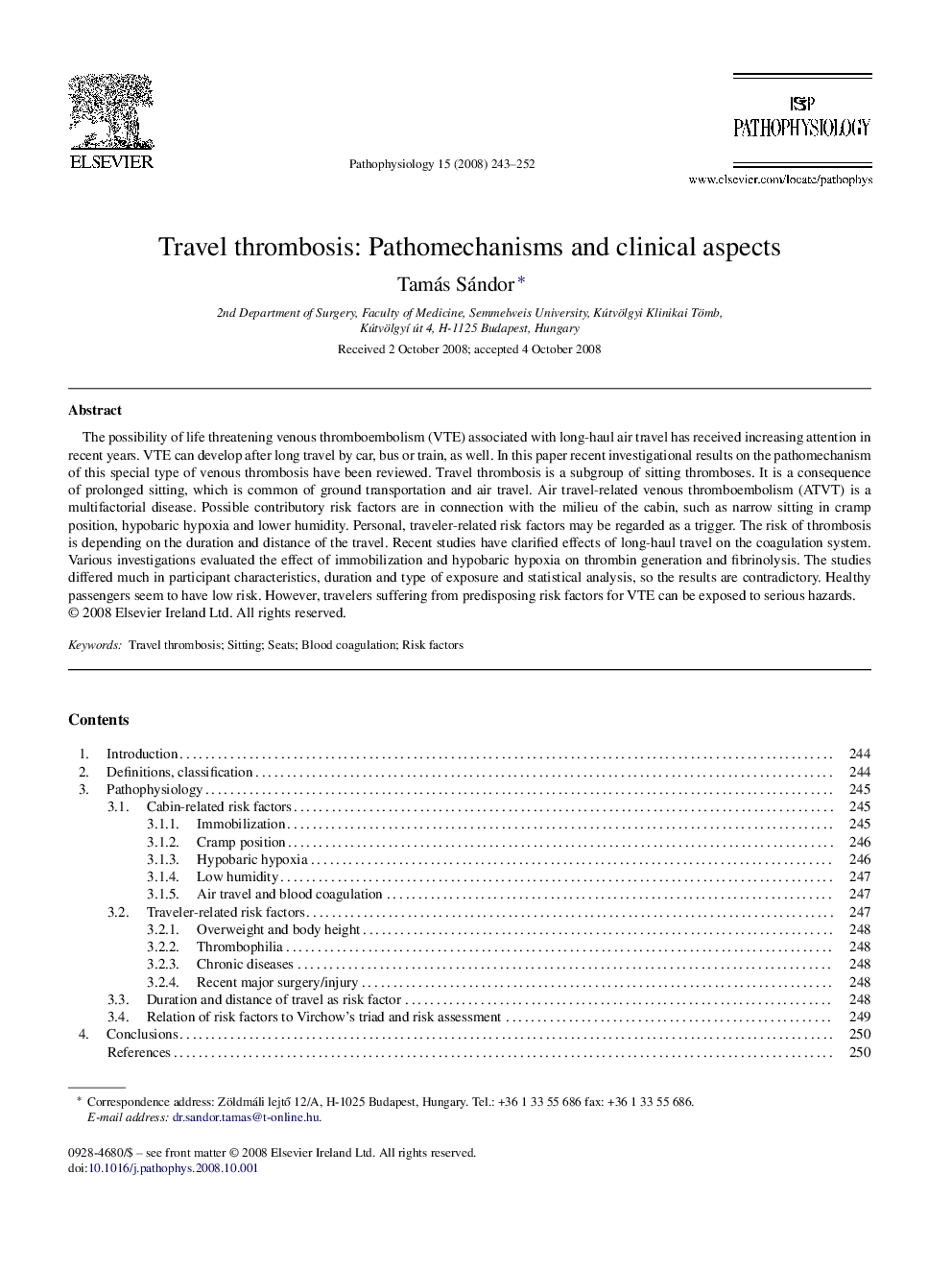| کد مقاله | کد نشریه | سال انتشار | مقاله انگلیسی | نسخه تمام متن |
|---|---|---|---|---|
| 4137250 | 1272017 | 2008 | 10 صفحه PDF | دانلود رایگان |

The possibility of life threatening venous thromboembolism (VTE) associated with long-haul air travel has received increasing attention in recent years. VTE can develop after long travel by car, bus or train, as well. In this paper recent investigational results on the pathomechanism of this special type of venous thrombosis have been reviewed. Travel thrombosis is a subgroup of sitting thromboses. It is a consequence of prolonged sitting, which is common of ground transportation and air travel. Air travel-related venous thromboembolism (ATVT) is a multifactorial disease. Possible contributory risk factors are in connection with the milieu of the cabin, such as narrow sitting in cramp position, hypobaric hypoxia and lower humidity. Personal, traveler-related risk factors may be regarded as a trigger. The risk of thrombosis is depending on the duration and distance of the travel. Recent studies have clarified effects of long-haul travel on the coagulation system. Various investigations evaluated the effect of immobilization and hypobaric hypoxia on thrombin generation and fibrinolysis. The studies differed much in participant characteristics, duration and type of exposure and statistical analysis, so the results are contradictory. Healthy passengers seem to have low risk. However, travelers suffering from predisposing risk factors for VTE can be exposed to serious hazards.
Journal: Pathophysiology - Volume 15, Issue 4, December 2008, Pages 243–252